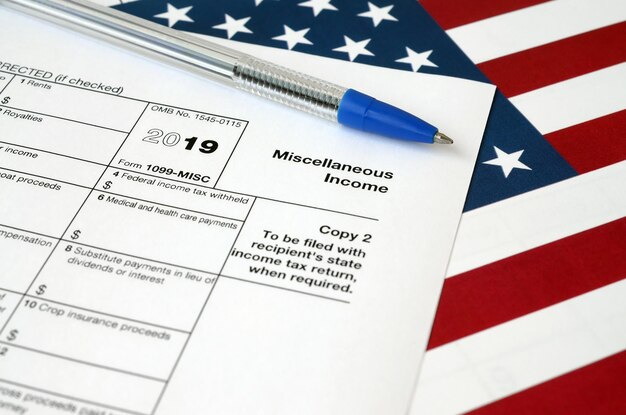Don’t Miss Out: File Form 8863 for Education Tax Credits by April 15, 2025

Tax Credit Deadline Approaching: File Form 8863 to Claim Education Credits Before April 15, 2025 to potentially reduce your tax liability and make education expenses more manageable for eligible students and their families.
Is the April 15, 2025 tax deadline looming? Don’t forget about valuable education tax credits. The **Tax Credit Deadline Approaching: File Form 8863 to Claim Education Credits Before April 15, 2025** could significantly reduce your tax burden and help offset the costs of higher education. Make sure you’re taking advantage of every available opportunity.
Understanding Form 8863 and Education Credits
Form 8863 is the key to unlocking valuable education tax credits. It’s the document you’ll need to file to claim either the American Opportunity Credit (AOC) or the Lifetime Learning Credit (LLC). Understanding this form is crucial for students and parents seeking to ease the financial strain of education expenses.

What is Form 8863 Used For?
Form 8863, Education Credits (American Opportunity and Lifetime Learning Credits), is an IRS form used to claim education tax credits. It’s vital for individuals who paid qualified education expenses for themselves, their spouse, or a dependent during the tax year.
Key Sections of Form 8863
The form is divided into sections that require specific information about the student, the educational institution, and the qualifying expenses. Accurate completion of these sections ensures proper credit calculation.
- Student Information: Includes the student’s name, Social Security number, and other identifying details.
- Educational Institution Information: Requires the name, address, and federal identification number of the eligible educational institution.
- Qualified Education Expenses: Details the expenses paid for tuition, fees, and course materials.
By understanding the purpose and key sections of Form 8863, taxpayers can navigate the process of claiming education tax credits more effectively and accurately.
American Opportunity Credit (AOC) Explained
The American Opportunity Credit (AOC) is a tax credit for qualified education expenses paid for the first four years of higher education. It’s a valuable resource for eligible students pursuing a degree or other credential.
Eligibility Requirements for AOC
To qualify for the AOC, the student must meet certain criteria, including:
- Seeking a degree or other credential.
- Enrolled at least half-time for at least one academic period beginning during the year.
- Not having completed the first four years of higher education.
- Not having claimed the AOC for more than four tax years.
- Not having a felony drug conviction.
Calculating the American Opportunity Credit
The AOC can be worth up to $2,500 per student. It’s calculated as 100% of the first $2,000 in qualified education expenses, plus 25% of the next $2,000. Even if you don’t owe taxes, you may be able to get up to 40% of the credit ($1,000) as a refund.
The AOC is a valuable tax benefit that can help offset the costs of higher education for eligible students and families.
Lifetime Learning Credit (LLC) Overview
The Lifetime Learning Credit (LLC) is another education tax credit that can help with the cost of higher education. Unlike the AOC, the LLC is available for all years of post-secondary education and for courses taken to improve job skills.
Who Can Claim the Lifetime Learning Credit?
The LLC is available to students taking courses at eligible educational institutions. These courses can be part of a degree program or taken to acquire job skills.
How the Lifetime Learning Credit Works
The LLC is worth up to $2,000 per tax return. It’s calculated as 20% of the first $10,000 in qualified education expenses. Unlike the AOC, the LLC is nonrefundable, meaning you can’t get any of it back as a refund if you don’t owe taxes.
The LLC can be a valuable resource for students pursuing lifelong learning and skills development.
Key Differences Between AOC and LLC
While both the American Opportunity Credit (AOC) and the Lifetime Learning Credit (LLC) aim to alleviate the financial burden of education, several key distinctions exist between them. Understanding these differences is crucial for taxpayers to determine which credit best suits their situation.

Eligibility and Restrictions
The AOC is more restrictive, primarily targeting students in their first four years of higher education pursuing a degree or credential. The LLC, conversely, has broader eligibility, covering all levels of post-secondary education and courses aimed at improving job skills.
Credit Amount and Refundability
The AOC offers a higher maximum credit amount ($2,500) compared to the LLC ($2,000). Additionally, a portion of the AOC is refundable, meaning taxpayers can receive a refund even if they owe no taxes. The LLC, however, is nonrefundable.
- AOC: Maximum $2,500 credit, up to 40% refundable.
- LLC: Maximum $2,000 credit, nonrefundable.
Choosing between the AOC and LLC depends on individual circumstances, including the student’s academic level, course objectives, and tax liability.
How to File Form 8863 Correctly
Filing Form 8863 accurately is essential for claiming education tax credits and avoiding potential issues with the IRS. Here’s a step-by-step guide to ensure you complete the form correctly.
Gather Necessary Documents
Before you begin, gather all relevant documents, including:
- Form 1098-T, Tuition Statement, from the educational institution.
- Student’s Social Security number.
- Records of qualified education expenses paid.
Step-by-Step Instructions
Follow these steps to complete Form 8863:
- Complete Part I for the American Opportunity Credit, if eligible.
- Complete Part II for the Lifetime Learning Credit, if eligible.
- Attach Form 8863 to your Form 1040 or Form 1040-SR.
Accurate completion of Form 8863 ensures that you receive the education tax credits you are entitled to.
Deadline and Important Dates
Staying informed about deadlines and important dates is crucial for claiming education tax credits. Missing these deadlines can result in forfeiting valuable tax benefits.
April 15, 2025: The Key Date
The primary deadline to keep in mind is April 15, 2025, the traditional tax filing deadline. This is the date by which you must file your tax return and Form 8863 to claim education credits for the 2024 tax year.
Extension Options
If you need more time to file, you can request an extension. However, it’s important to note that an extension to file is not an extension to pay. You must still estimate your tax liability and pay any taxes owed by the April 15th deadline to avoid penalties and interest.
Timely filing and proper planning are essential for maximizing education tax credit opportunities.
| Key Point | Brief Description |
|---|---|
| 🎓 Form 8863 | Used to claim American Opportunity or Lifetime Learning Credits. |
| 💰 AOC | Credit up to $2,500 for first 4 years of higher education. |
| 📚 LLC | Credit up to $2,000 for lifelong learning and job skills. |
| 📅 Deadline | File Form 8863 by April 15, 2025, to claim education credits. |
Frequently Asked Questions (FAQs)
Qualified education expenses are tuition, fees, and course materials required for enrollment or attendance at an eligible educational institution. Room and board are generally not included.
No, you cannot claim both the American Opportunity Credit and the Lifetime Learning Credit for the same student in the same tax year. You must choose one.
Form 1098-T, Tuition Statement, is a form provided by educational institutions to students, reporting the amount of qualified tuition and related expenses paid during the tax year. It’s needed to claim education credits.
If you file Form 8863 after the tax deadline (typically April 15th), you may not be able to claim the education credits. It’s crucial to file on time to receive these tax benefits.
You can download Form 8863 from the IRS website (irs.gov). You can also obtain it from your tax preparer or through tax preparation software.
Conclusion
As the Tax Credit Deadline Approaching: File Form 8863 to Claim Education Credits Before April 15, 2025 gets closer, understanding the requirements and processes for claiming education tax credits is essential. By taking the time to gather the necessary documents, completing Form 8863 accurately, and filing on time, you can potentially reduce your tax liability and make education expenses more manageable.